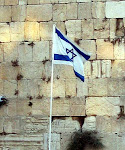Article by The Israel High-Tech & Investment Report
Published in April's issue.The ability to see through solid, non-transparent walls is a capability that everyone can immediately find applications for. For people who operate in hostile environments this ability can be the difference between success and failure of an operation. Failure may spell out casualties. The need for this technology has existed for a long time and now the Xaver 800 is mature to deliver this capability in a compact, portable device.
The Xaver 800 system creates an operational unfair advantage to the one who operates it. It pretty much changes the rules of the game, allowing a real shift in operational paradigms. Forces can plan ahead and beyond the wall they stand in front of, significantly increasing their mission success probability while protecting their lives. The Xaver 800 is microwave radar that is capable of penetrating walls and creating an image of objects behind those walls by picking up the reflected energy from those objects. The system provides information regarding the number of people, their location and orientation, as well as the shape of the room.
Xaver™400 Video Presentation
The system is basically a radar system, but with several unique characteristics. First and foremost, the operational environment is very different than ordinary radars, for air traffic control. Ordinary radar operates in free space over large distances and transmits very high power levels. The xavier system needs to penetrate walls and provide high resolution over relatively short distances. In addition, due to the fact that there are people in the immediate vicinity of the system we must keep microwave radiation at safe levels. The design utilizes special antenna design and an ultra wideband (UWB) signal to cope with the challenge. The use of UWB signal provides design simplicity on one hand, but required innovative implementation on the other. The Xaver 800 can see through most commonly used wall materials, e.g. clay brick, cinder blocks, reinforced concrete, plaster dry wall, wood, adobe and stone.
The system provides situational awareness of a room or building by providing information of how many people are behind the wall or walls; it also provides information on the structure of the building or rooms. Getting information from behind solid walls allows better preparation of an operation: reducing surprises, ensuring efficient use of resources and eventually saving lives.
Applications include:
* Military urban operations
* Hostage rescue
* Victim search and rescue
The Xaver 800 is a portable system. It weighs 15Kg/33lb and it folds to a compact 47cmX47cmX15cm ( 19" x 19" x 6") that can be easily carried and operated by a single person. The system consists of two parts - Front end (FE), which is the sensor part and Back end (BE), which is the operating and display unit. The two parts may be either attached to each other or connected by cable. Unfolding the sensor and mounting the system on a tripod takes less than one minute. The Xaver 800 delivers images within 15 seconds from pressing the ON/OFF button.
 According to Solar Feeds website, ZenithSolar, an Israeli start-up company to license revolutionary solar energy technologies, will be launching its first “solar farm” in April 2009 based on Concentrated Photovoltaic (CPV) systems. Developed by Prof. David Faiman, Chairman of the Department of Solar Energy and Environmental Physics at the University’s Jacob Blaustein Institutes for Desert Research, the system will harvest more than 70% of incoming solar energy (as compared to industry norms of 10% to 40%).
According to Solar Feeds website, ZenithSolar, an Israeli start-up company to license revolutionary solar energy technologies, will be launching its first “solar farm” in April 2009 based on Concentrated Photovoltaic (CPV) systems. Developed by Prof. David Faiman, Chairman of the Department of Solar Energy and Environmental Physics at the University’s Jacob Blaustein Institutes for Desert Research, the system will harvest more than 70% of incoming solar energy (as compared to industry norms of 10% to 40%).














